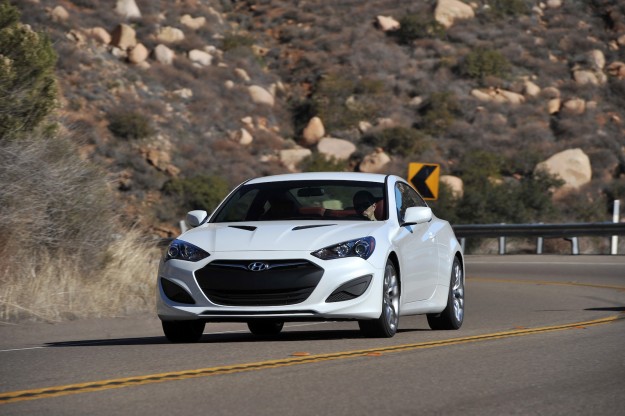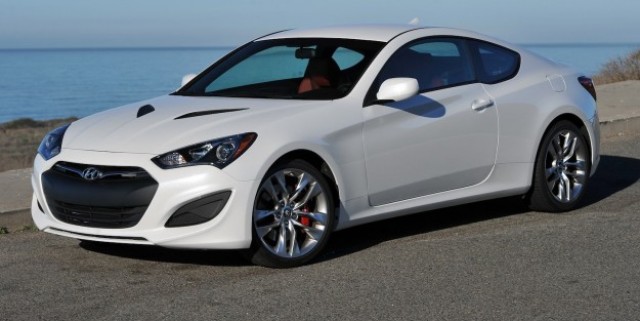
A review of the Hyundai Genesis Coupe is both a good news story, and a bad news story.
The good news is that the Hyundai Genesis Coupe is the only rear-wheel-drive, two-door sports coupe that exists between the Toyota 86/Subaru BRZ and the Nissan 370Z and BMW 1 Series. The bad news is that Australians wanting to buy either the turbocharged four-cylinder or non-turbo V6 version of the car must wait until a new model is built in right-hand-drive … which is confirmed to happen, but not until 2015.
The Hyundai Genesis Coupe is expected to cost around $40,000, which is the same money as a front-wheel-drive Volkswagen Golf GTI. The German-built hatchback is no doubt classier, more spacious, and it is brilliant to drive. But with power going to the back wheels, the Genesis coupe should do oversteer – meaning the tail of the car can be adjusted via the throttle, shifting the rear end from slightly moving sideways to full sideways.
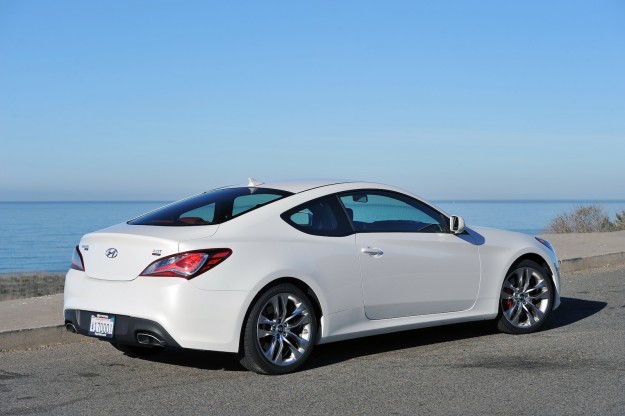
But a rear-wheel-drive car is also arguably more ‘connected’ to its driver than cars pulling themselves from the front wheels. Typically, steering is less corrupted because the front wheels don’t have to put power to the ground as well as turn.
So the questions are whether the Hyundai Genesis Coupe can match a Golf GTI for driver appeal, and whether it is worth the extra over the 86/BRZ. If it isn’t, what can we suggest Hyundai work on for the next generation which actually will arrive on local shores…
First up is the 2.0-litre turbo (below) that produces a healthy 204kW and 373Nm. By comparison a Golf GTI makes 155kW and 280Nm, so a fair more whack is available in the Korean-built rear-drive coupe. But the Genesis Coupe weighs 1525kg, a full 165kg more than the VW hot-hatch, so some of the performance benefit is negated.
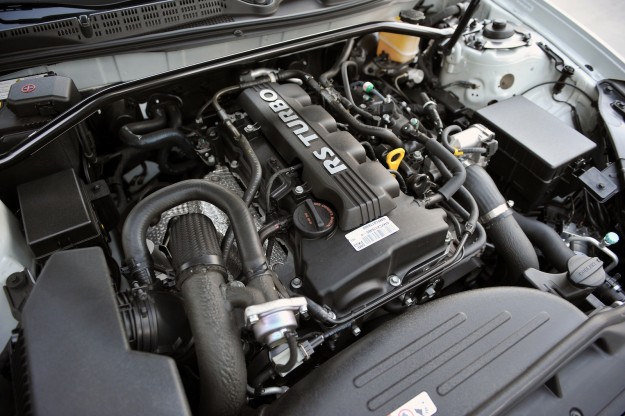
Outright performance still isn’t a problem for the Genesis Coupe with the smaller engine – it will get from zero to 100km/h in a fraction under seven seconds. Immediately obvious, however, is the driveability issues – that is, a sticky clutch that makes smooth getaways difficult, a notchy gearbox that makes quick shifting of gears less enjoyable than it should be, and an engine that isn’t as linear as some.
The 2.0-litre engine is quiet and smooth, but it also lacks character and there is a bit of a delay with delivery from right at the bottom end of the rev counter. Going the other way – stopping from speed – the Brembo brakes of the R-Spec Genesis Coupe models bring the 19-inch wheels and tyres to a halt confidently.
A bit of a mix so far, then.
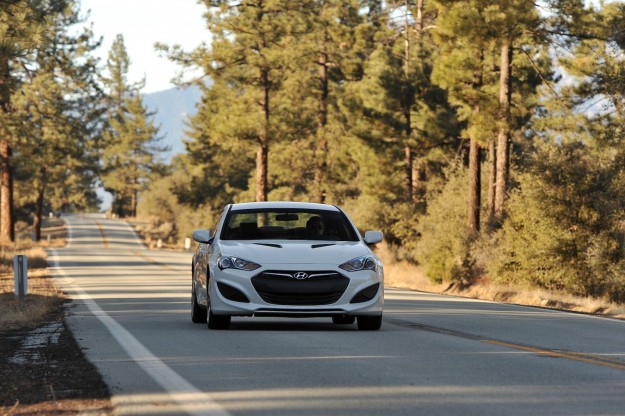
That theme continues with steering that is lacking in the sort of precise movement expected from the best sports cars. The steering is light, but the movement between keeping the wheel straight and getting the wheels to turn in is delayed, creating an unwelcome nervousness.
The handling, however, is very good. The Genesis Coupe sits flatly in the bends, resisting too much push from the front end when corners are tackled at speed. If balance is required – that is feeling the front end lose grip, lifting the throttle, then feeling the rear end come around – then look to that perennial hot-hatch favourite featuring the letters G, T and I.
Perhaps surprisingly, the way the Genesis Coupe rides over bumps large and small is pleasing for a sports car. It isn’t a luxurious, plush, ultra-comfortable ride, but there’s a firm sophistication to the way this Hyundai deals with road irregularities that keeps it from being too harsh and uncomfortable.
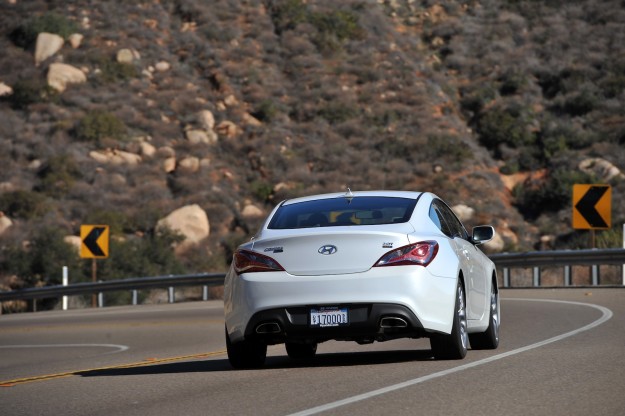
Swapping to the 3.8-litre V6 (above) brings even more power and torque, 260kW and 400Nm. Forget Golf GTI associations as the V6 is more powerful than a Nissan 370Z that costs $70,000, though the Genesis V6 weighs up to 1639kg – or a full 194kg more than the two-seat Nissan coupe.
But the non-turbo V6 quickly establishes itself as a better proposition than the turbocharged four-cylinder engine. The clutch and gearbox are smoother and more fluent. There’s also a grainy engine note that endows the Genesis coupe with a vaguely muscle-car character. It feels grunty, and characterful.
The V6, however, also highlights an ordinary stability control calibration that takes seemingly random bites out of the brake disc when in the middle of a corner – despite the car being able to cope with decent cornering speed.
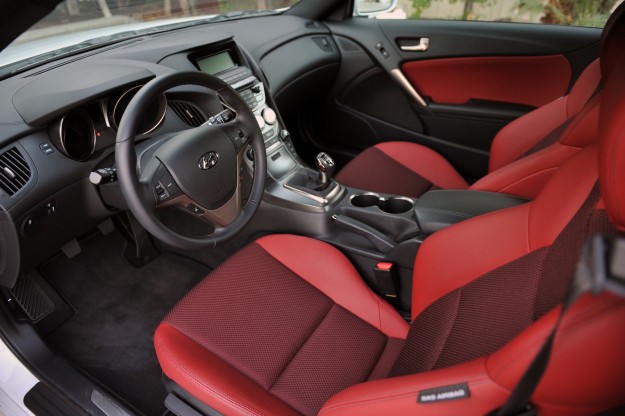
In practicality terms, the Hyundai Genesis Coupe gets a 283-litre boot, so it isn’t as versatile as a hot-hatch. Its rear seat only accepts two people, and there’s not much rear legroom and even less headroom thanks to a sloping roofline.
Having launched in South Korea and North America in 2007, the six-year-old Genesis Coupe feels its age in terms of interior plastic quality and ergonomics. Hyundai has made big strides in this area in recent years, though, so there is cause for optimism that the next-generation model will better compete in these terms with $40,000-50,000 sports car rivals.
The Genesis Coupe is already well equipped with six airbags, active front head restraints, rear LED tail-lights, tyre pressure monitor, digital radio, and on the R-Spec and Premium models, leather trim, electric-adjust driver’s seat, satellite navigation, sunroof, auto dimming rear-view mirror and climate control.
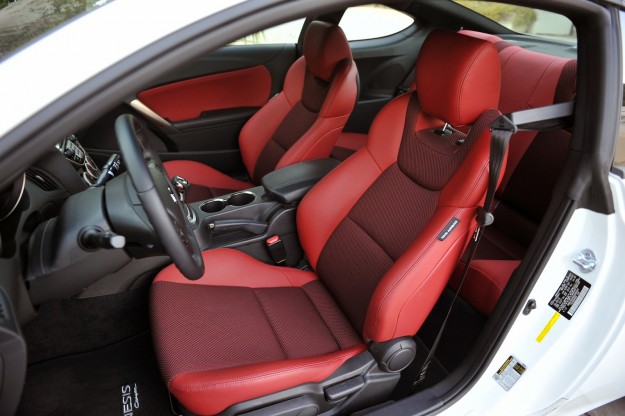
None of which will matter to Australians, obviously. This generation of Genesis Coupe only has two years left on sale in North America before a whole new model debuts and will be sent to our shores.
There’s no word yet on specifications or pricing for the new car, but the Genesis Coupe does show enough promise to be a worthy addition to the Hyundai model range in this country. Unlike other segments Hyundai competes in here, the Genesis Coupe, as an affordable rear-wheel driver, will carve a decent niche for itself between the Toyota 86/Subaru BRZ and Nissan 370Z and BMW 1 Series Coupe.
As it stands, though, the Hyundai Genesis Coupe is a worthy and likeable sports car option seeking finesse. Get the gearbox, turbo response, stability control and steering to match the fun handling and strong performance, and the next-generation Genesis Coupe will be worth the two-year wait. It may also be a wholly good news story…
